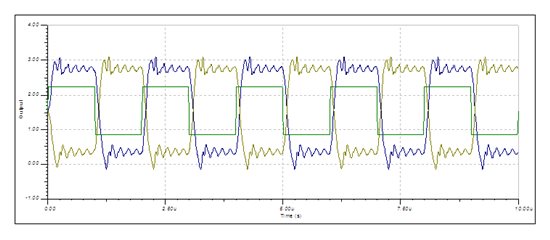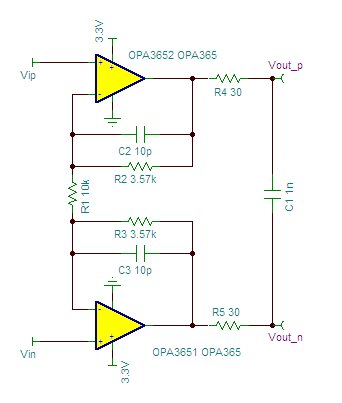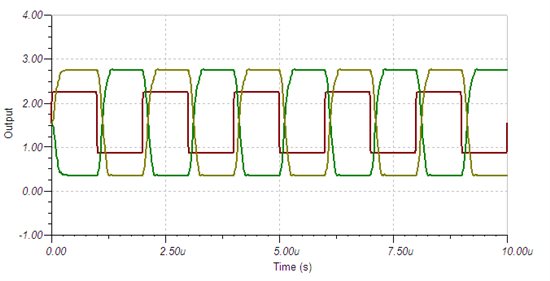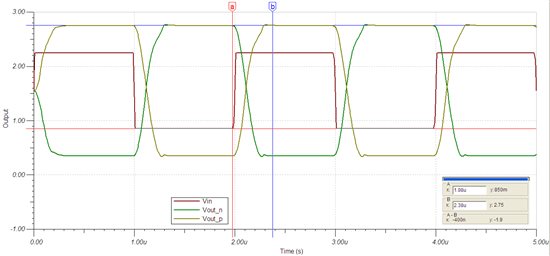I would like to use ADS8363 fully differential driver configuration as reported in ADS8363 data sheet page 39 with following values:
C 1nF as suggest on data sheet
R = 4 Ohm as calculated using (6), n=16, tacq =100 ns
R1 between OPA2365 output and non inverting input 3570 Ohm
R2 between the two OPA2365 non inverting input 10 KOhm to have a 1.7 amplification value.
Simulating with spice (OPA365 model from TI) and applying a differential 2 MHz square signal duty cycle 50 % (rise and fall 10 ns),
circuit output present an oscillation that could corrupt ADC read value.
Is this behaviour real ?
Do I need a stabilization trick like a feed back capacitor (10/20 pF) ?
Thank you in advance,
Daniele.





